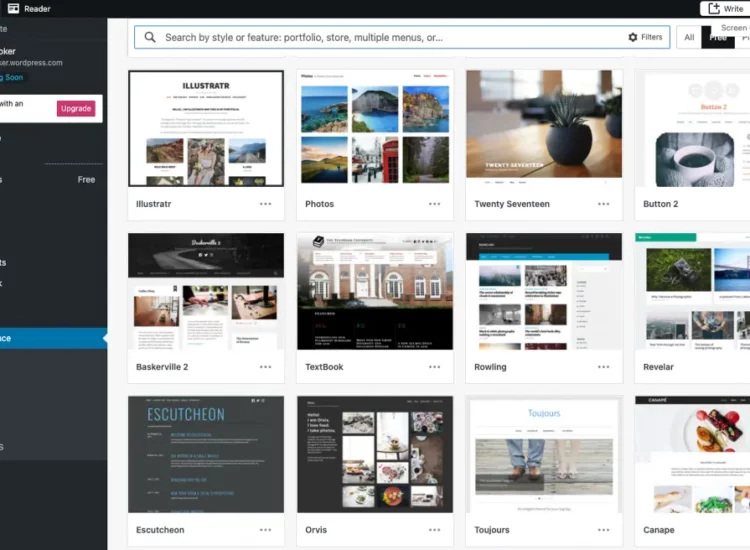Google Analytics is more than just a tool—it’s a game-changer for website owners looking to maximize their online presence. This article will explore the ins and outs of Google Analytics, detailing its benefits, how it works, and real-life success stories to inspire you to take advantage of this powerful platform.
Toc
Introduction to Google Analytics

Google Analytics is a free web analytics service offered by Google that tracks and reports website traffic. It’s an essential tool for website owners to understand how visitors interact with their sites, offering invaluable insights that can drive strategic decisions and business growth. With its easy-to-use interface and powerful data visualization capabilities, Google Analytics has become the go-to choice for businesses of all sizes.
How Google Analytics Works?
Google Analytics operates by embedding a small piece of JavaScript code into every page of your website. When a user visits your site, this code collects data about their interaction and sends it back to Google’s servers. This data includes information like the pages they visit, the time spent on each page, the device and browser they use, and their geographic location. Google Analytics then processes this raw data and presents it in detailed reports, which you can access through the Google Analytics dashboard. These reports can be customized to show specific metrics and dimensions that are most relevant to your business objectives.
Benefits of Using Google Analytics
Google Analytics offers a wide range of benefits that make it an essential tool for website owners. Here are some key advantages:
- Track Website Traffic: One of the primary functions of Google Analytics is to track and report website traffic. It provides detailed information on page views, unique visitors, bounce rates, and more. This data can help you understand your audience better and identify areas to improve your website’s user experience.
- Measure Campaign Performance: Whether you’re running an email campaign, social media ads, or other marketing initiatives, Google Analytics can help you track their performance. You can see which campaigns are driving the most traffic to your site and how visitors are engaging with your content.
- Identify Top-performing Content: With Google Analytics, you can see which pages on your website are getting the most views and engagement. This information can help you focus on creating more of the type of content that resonates with your audience.
- Make Data-driven Decisions: By providing in-depth data and analytics, Google Analytics enables website owners to make informed decisions about their digital strategies. You can track your progress towards specific goals and make necessary adjustments to improve performance.
Why Google Analytics is essential for a Website?

Having a website without Google Analytics is like flying blind; you have no idea what’s working and what’s not. Here are some reasons why Google Analytics is essential for a website:
Understand User Behavior
Google Analytics provides comprehensive insights into how users interact with your site. By analyzing metrics such as average session duration, bounce rate, and pages per session, you can gain a better understanding of what keeps users engaged and what drives them away. This information is crucial for optimizing user experience and improving site navigation.
Optimize Marketing Strategies
With Google Analytics, you can track the effectiveness of various marketing channels, from organic search and paid advertisements to social media and email campaigns. By identifying which channels deliver the highest return on investment (ROI), you can allocate your marketing budget more effectively and focus on the strategies that yield the best results.
Enhance SEO Performance
Google Analytics offers data that can significantly enhance your search engine optimization (SEO) efforts. By examining metrics such as organic search traffic, click-through rates, and keyword performance, you can identify areas for improvement and adjust your SEO strategy accordingly. Over time, these adjustments can lead to higher search engine rankings and increased organic traffic.
Improve Conversion Rates
Understanding how users navigate through your website can help you identify bottlenecks in the conversion process. Google Analytics enables you to set up conversion tracking and goals, allowing you to see where users drop off and what actions lead to successful conversions. By addressing these issues, you can improve your site’s conversion rates and ultimately drive more sales or leads.
Customizable Reporting
One of the standout features of Google Analytics is its customizable reporting capabilities. You can create tailored reports that focus on the metrics and dimensions most relevant to your business objectives. Whether you need a high-level overview for a board meeting or detailed data for a marketing campaign, Google Analytics can provide the insights you need in a format that suits your needs.
Real-Time Data and Custom Reports of Google Analytics
Google Analytics also offers real-time data, which shows you what’s happening on your website at that moment. This feature is particularly useful if you’re running a live event or sale and want to track the immediate impact on your website traffic. Additionally, Google Analytics allows users to create custom reports based on specific metrics and dimensions they want to track. These customized reports can provide a deeper understanding of your website visitors and help you make more informed decisions.
Real-Time Data
One of the standout features of Google Analytics is its real-time reporting capabilities. Real-time data allows you to monitor activities on your website as they happen. This feature is particularly useful during events like product launches, live streams, or marketing campaigns, where understanding immediate user response can be crucial. With real-time reports, you can see the current number of visitors on your site, what pages they are viewing, their geographic locations, and even the traffic sources directing them to your website. This instant feedback loop helps you swiftly identify and react to any issues or opportunities as they arise.
Custom Reports
Google Analytics offers robust customization options that enable you to create reports tailored to your specific needs. Custom reports allow you to focus on the metrics and dimensions that are most relevant to your business objectives. Whether you want to track the performance of a particular marketing channel, assess the impact of a recent website redesign, or measure the effectiveness of your SEO efforts, custom reports can provide the precise data you need.
Creating a custom report is straightforward. Within the Google Analytics dashboard, navigate to the “Customization” section and select “Custom Reports.” From there, you can specify the dimensions and metrics you want to include in your report, apply filters to narrow down the data, and define how the report should be displayed. These tailored insights can significantly enhance your ability to make data-driven decisions and optimize your digital strategies.
Use Cases and Success Stories of Google Analytics

Google Analytics has been a pivotal tool for many businesses, empowering them to optimize their digital presence and achieve remarkable success. Below are some real-life examples of how companies have leveraged Google Analytics to drive growth and improve user engagement:
E-commerce Store Optimization
An online clothing retailer used Google Analytics to gain insights into customer behavior on their website. By analyzing the data, they discovered that a significant number of visitors were abandoning their shopping carts on the payment page. Further investigation revealed that the page had a slow loading time and a complicated checkout process. Armed with this information, the retailer streamlined the checkout process and optimized the page’s loading time, resulting in a 20% increase in conversions.
Content Strategy Improvement
A media company used Google Analytics to determine which content on their website was most popular among their audience. They found that long-form articles with visual elements received the most engagement, while shorter articles were frequently dismissed by readers. Armed with this knowledge, the company shifted its content strategy to focus on longer and more visually appealing articles, leading to a significant increase in website traffic and ad revenue.
Multichannel Marketing Analysis
A multinational corporation used Google Analytics to track their marketing campaigns across various channels, including social media, email, and video ads. By analyzing the data, they discovered that their target audience responded best to video ads on Facebook. As a result, the company reallocated their marketing budget to focus more on this channel, resulting in a 25% increase in sales.
Future of Google Analytics After Transforming to GA4
Google Analytics 4 (GA4) represents the next evolution in analytics, designed to offer more insightful and actionable data in an ever-changing digital landscape. Unlike its predecessor, GA4 provides a more comprehensive view of the customer journey by integrating data across platforms and devices. This shift is particularly relevant given the increasing complexity of user interactions and the need for a more unified approach to analytics.
Enhanced Data Collection and Integration
One of the standout features of GA4 is its ability to collect and integrate data from a wider range of sources. This includes traditional website interactions as well as app usage, allowing businesses to track the full spectrum of user engagement. GA4’s event-based data model deviates from the session-based model used in Universal Analytics, providing a more flexible and granular approach to understanding user behaviours.
Improved Machine Learning Capabilities
GA4 leverages advanced machine learning techniques to offer predictive insights and automated alerts. This functionality can identify trends and anomalies that may not be immediately apparent, helping businesses to anticipate future actions and optimize their strategies accordingly. For instance, predictive metrics like potential revenue from a specific audience segment can guide marketing efforts and resource allocation more effectively.
Privacy-Focused and Future-Proof
In response to growing concerns around data privacy and regulatory requirements, GA4 has been designed with a focus on compliance and user consent. It employs enhanced privacy controls, such as the ability to anonymize data and manage user consent preferences, which can help businesses navigate the complexities of modern data governance. Additionally, GA4’s architecture is built to adapt to a future without cookies, ensuring that businesses can continue to track and analyze user interactions even as third-party cookies become increasingly obsolete.
Actionable Insights and Enhanced Reporting
GA4’s reporting features are both more powerful and user-friendly, offering customizable dashboards and deeper insights into user interactions. The platform’s enhanced analysis techniques, such as funnel analysis and pathing, allow businesses to draw more actionable conclusions from their data. This makes it easier to identify user pain points, optimize customer journeys, and ultimately drive better business outcomes.
Integration with Google Ecosystem
GA4 is designed to work seamlessly within the broader Google ecosystem, integrating with tools like Google Ads, BigQuery, and Firebase. This interoperability enables businesses to streamline their workflows and make more informed decisions based on a richer dataset. For example, by linking GA4 with Google Ads, businesses can more precisely measure the effectiveness of their ad spend and refine targeting strategies in real-time.
Conclusion and Next Steps

The transition to Google Analytics 4 marks a significant milestone for businesses aiming to thrive in a data-driven world. However, to leverage the full potential of GA4, companies need to adapt and evolve their analytics strategies. Here are some recommended next steps to ensure a smooth migration and maximized benefits:
Educate and Train Your Team
Investing in education and training for your team is crucial to fully harness the power of GA4. Familiarize your team with the new features, reporting tools, and capabilities offered by GA4. Google provides a wealth of resources, including webinars, tutorials, and certification programs, to help businesses transition effectively.
Audit Your Current Analytics Setup
Before migrating, conduct a thorough audit of your existing Google Analytics setup. Identify key performance indicators (KPIs), custom segments, and event tracking that are critical to your business. This will help you understand what needs to be replicated or adjusted in GA4.
Implement Dual Tagging
During the transition phase, it is advisable to implement dual tagging. This means running Universal Analytics and GA4 simultaneously. Dual tagging ensures continuity in data tracking and provides a safety net by allowing comparisons between the two systems. This approach reduces the risk of data loss or discrepancies during migration.
Customize and Configure GA4
Take advantage of GA4’s customizable features to tailor the platform to your business needs. Configure events, conversions, and user properties that align with your specific objectives. Utilize the more granular data collection capabilities to better understand user behaviour and engagement.
Leverage Predictive Metrics
One of GA4’s standout features is its predictive metrics and insights. Utilize these predictive tools to forecast trends, identify potential high-value customers, and optimize your marketing strategies. These insights can guide proactive decision-making and enhance your overall business performance.
Monitor and Optimize
Post-migration, continuously monitor your GA4 setup to ensure everything is functioning correctly. Regularly review your data, analyze reports, and make necessary adjustments to optimize your tracking and reporting configurations. Staying vigilant will help you adapt to any changes or glitches swiftly.











